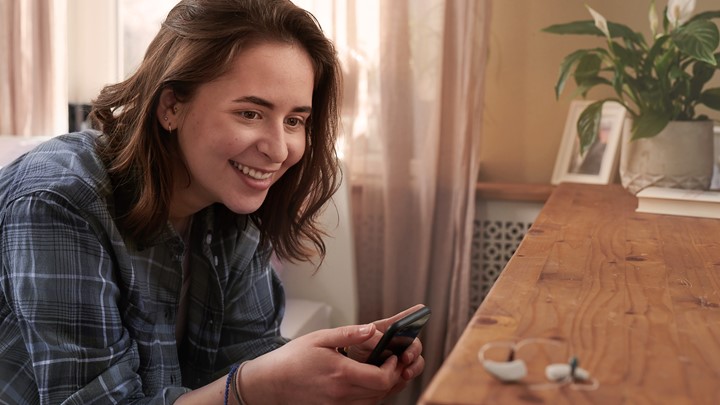Smart Hearing:
The hearing aids of the future
Smart Hearing
Modern hearing aids are small digital high-tech devices. Already today they can connect to smartphones and other devices and thus offer additional functions - just an intermediate step on the way to smart hearing; the development from hearing aids to intelligent hearing systems is progressing steadily; in the near future hearing aids will connect to household appliances of all kinds and web applications via the Internet. This, in turn, will enable a multitude of new comfort features.

From smart hearing aids to smart hearing
The first steps have already been taken: the hearing aid communicates with the smartphone via Bluetooth radio, and the wearer can use an App to adjust the volume and change hearing programs. In addition, hearing aids can be connected to the TV to transmit the TV sound directly to the hearing aids. The modern lithium-ion batteries of the smart hearing aids have a runtime of up to 30 hours and make battery changes unnecessary. Smart Hearing is the next step - the communication of the hearing aids with other devices in the household and the so-called Internet of Things.
Comprehensive networking enables completely new comfort functions
The term Internet of Things (IoT) stands for the comprehensive networking of devices with each other and via the Web - the cooker communicates with the extractor hood, the refrigerator records its contents using sensors and sends a corresponding message to the smartphone - so nothing is forgotten when shopping.
In conjunction with the Internet service IFTTT, the Internet of Things enables a wide range of automated actions. IFTTT is the abbreviation for "If This Then That". The platform allows devices and applications of various kinds to be linked together and actions to be programmed. An example: The user defines that an e-mail is automatically sent to him when there is a new song of his favourite band on the streaming service Spotify.
Smart Hearing means the integration of hearing aids into this system and creates the possibility for completely new additional functions that support hearing aid wearers in their everyday life. For example, they receive a message on their smartphone when the hearing aid batteries run low - and can thus recharge the batteries in time. Smart Hearing goes even further: messages can be sent directly to the hearing aid, for example a tweet on Twitter or a rain warning. Messages can also be sent to let you know that the doorbell has rung or that the laundry is ready in the dryer. The spectrum of applications is huge, and the hearing aids of the future will provide their wearers with a great deal more comfort and safety.
Discover other articles
- Smart Hearing: What intelligent hearing systems do
- The sooner an ENT specialist is consulted, the better
- Comfort to go: KINDvitalo
- Hearing loss and its causes
- Hearing aids while driving
- Optimized design for hearing solutions
- Meniere's disease
- Hearing test: Procedure and result
- Loud alone is not enough:
- Noise protection for the ears